Abstract
Rats were trained to press a lever under schedules of food postponement. In the absence of lever presses, food was delivered periodically (food-food interval). Responses initiated a second interval (response-food interval) that was reset by each additional response. Performance was first studied at different response-food intervals with the food-food interval fixed at 30 or 60 sec, or 10 min. Response-food intervals were examined in ascending order and then recovery was studied at shorter intervals. Finally, the food-food interval was manipulated with response-food interval fixed at 30 sec. At food-food intervals of 30 and 60 sec, responding first increased and then decreased as the response-food interval increased. At the 10-min food-food interval, responding decreased with increasing response-food interval. In general, very low rates of responding occurred when the response-food interval was 60 sec or more and when it equalled or exceeded the food-food interval. However, responding was maintained in one animal when the food-food interval was decreased from 120 to 15 sec with the response-food interval at 30 sec. Results, in terms of several dependent variables, are compared with data on shock avoidance. Effects of response-independent and response-produced food and shock are discussed.
Full text
PDF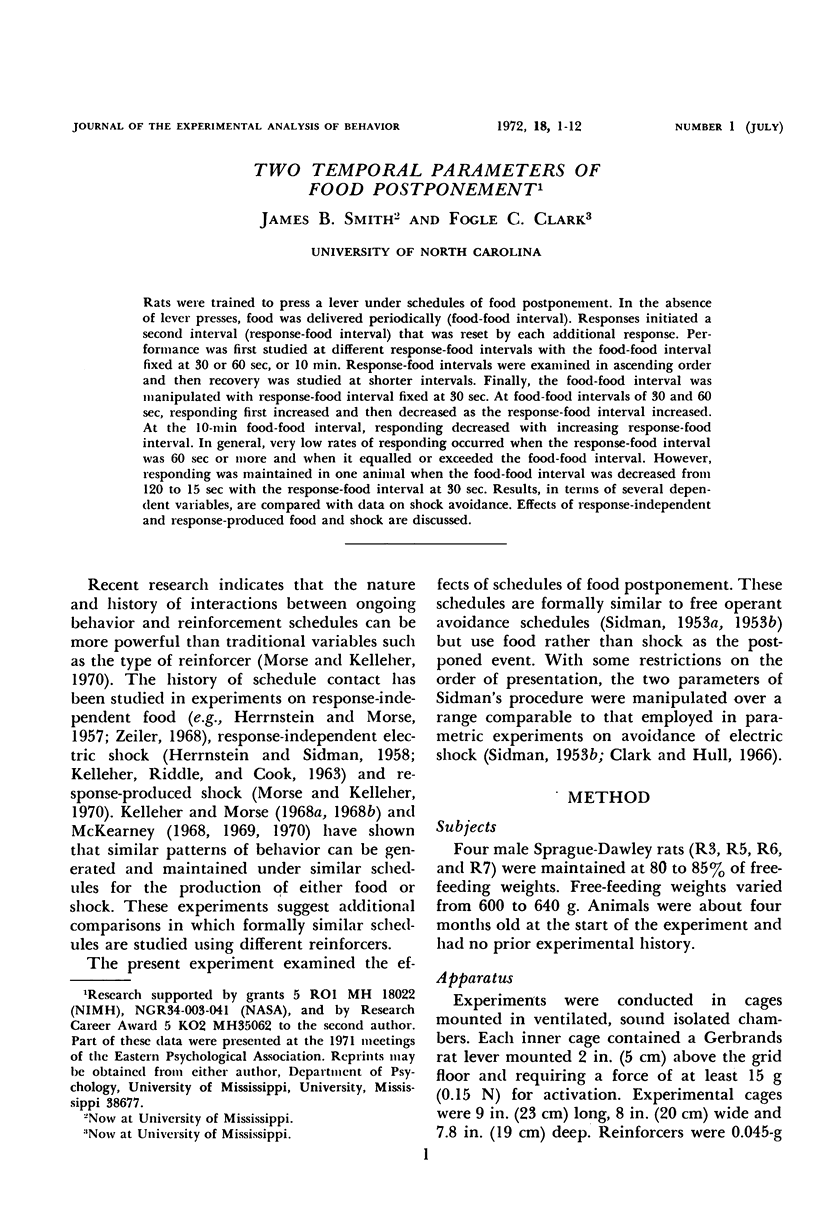

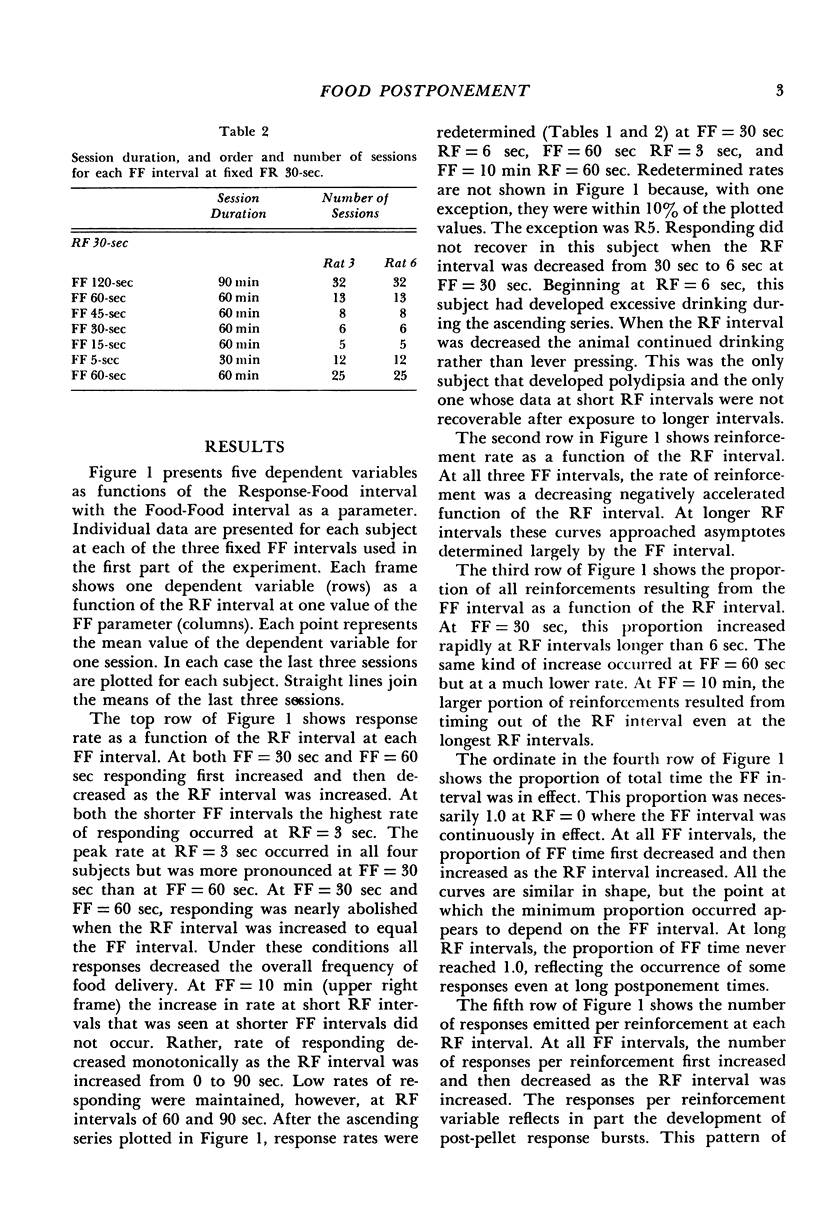
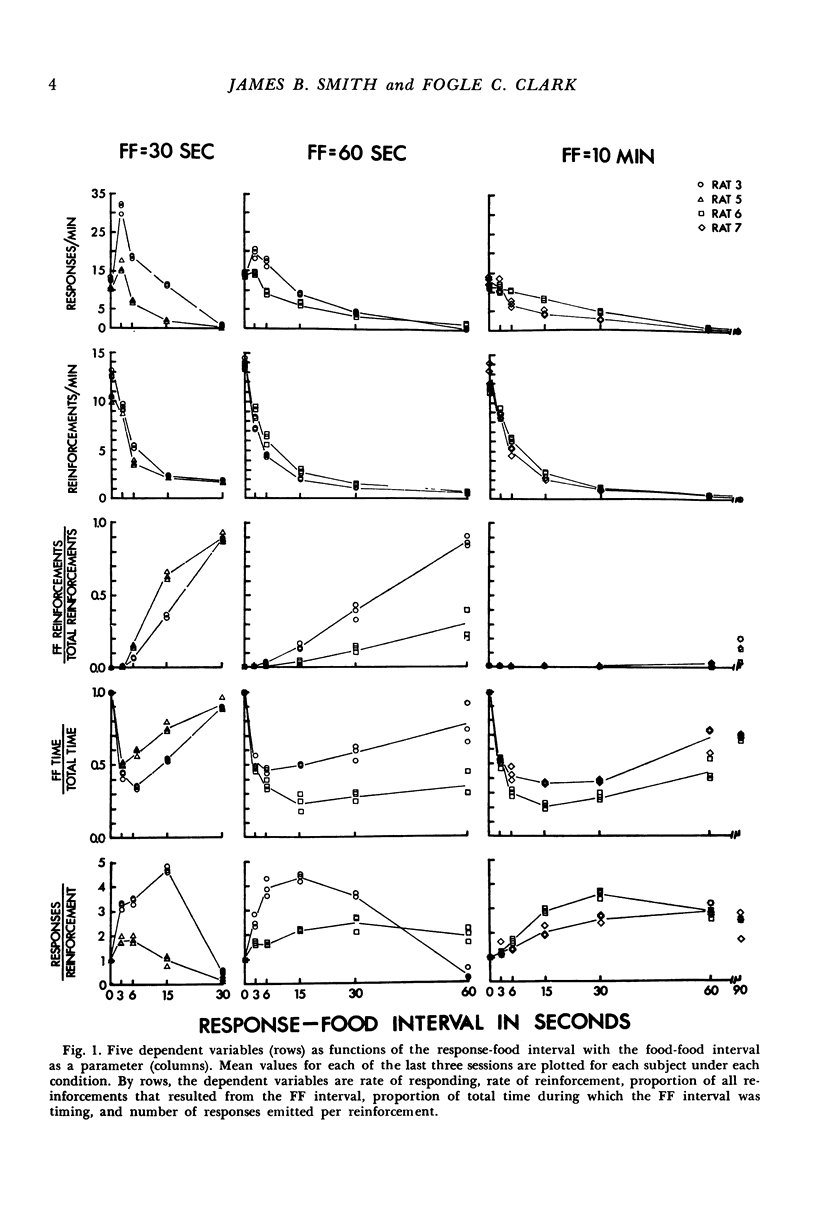
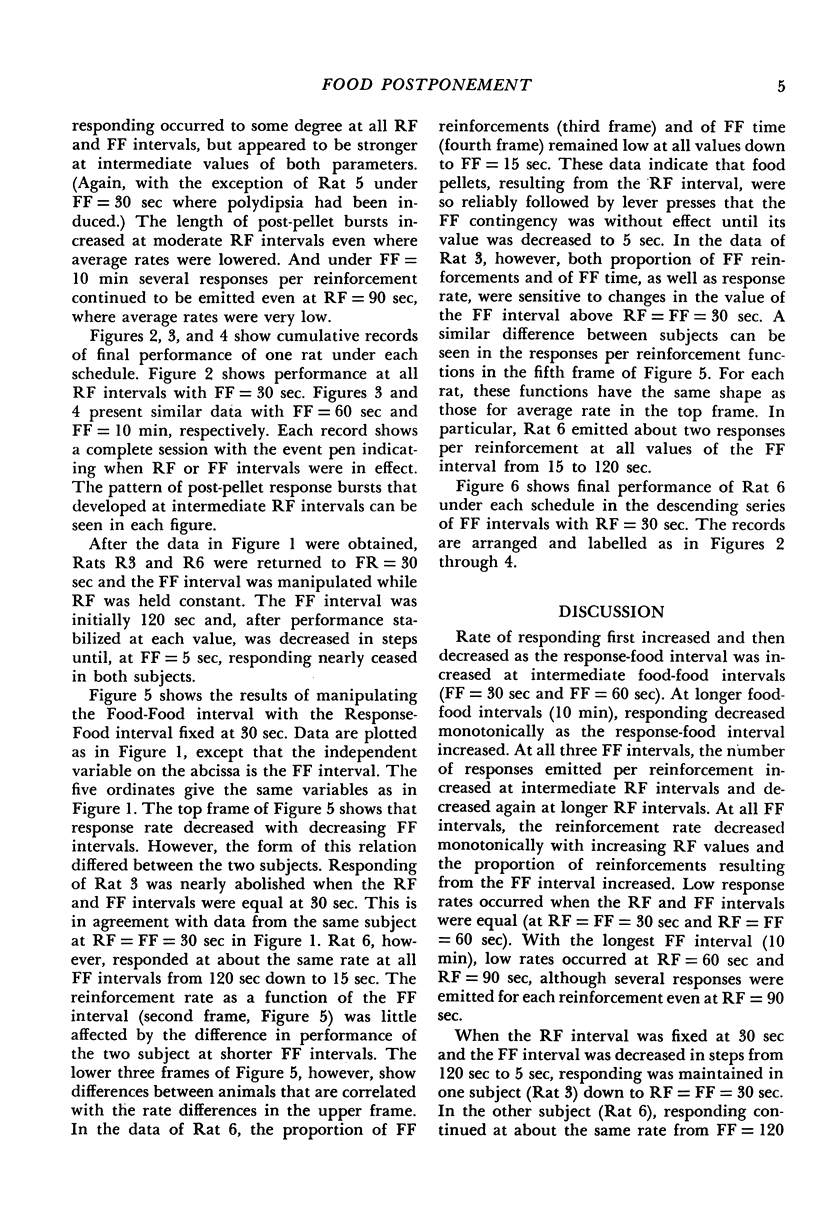
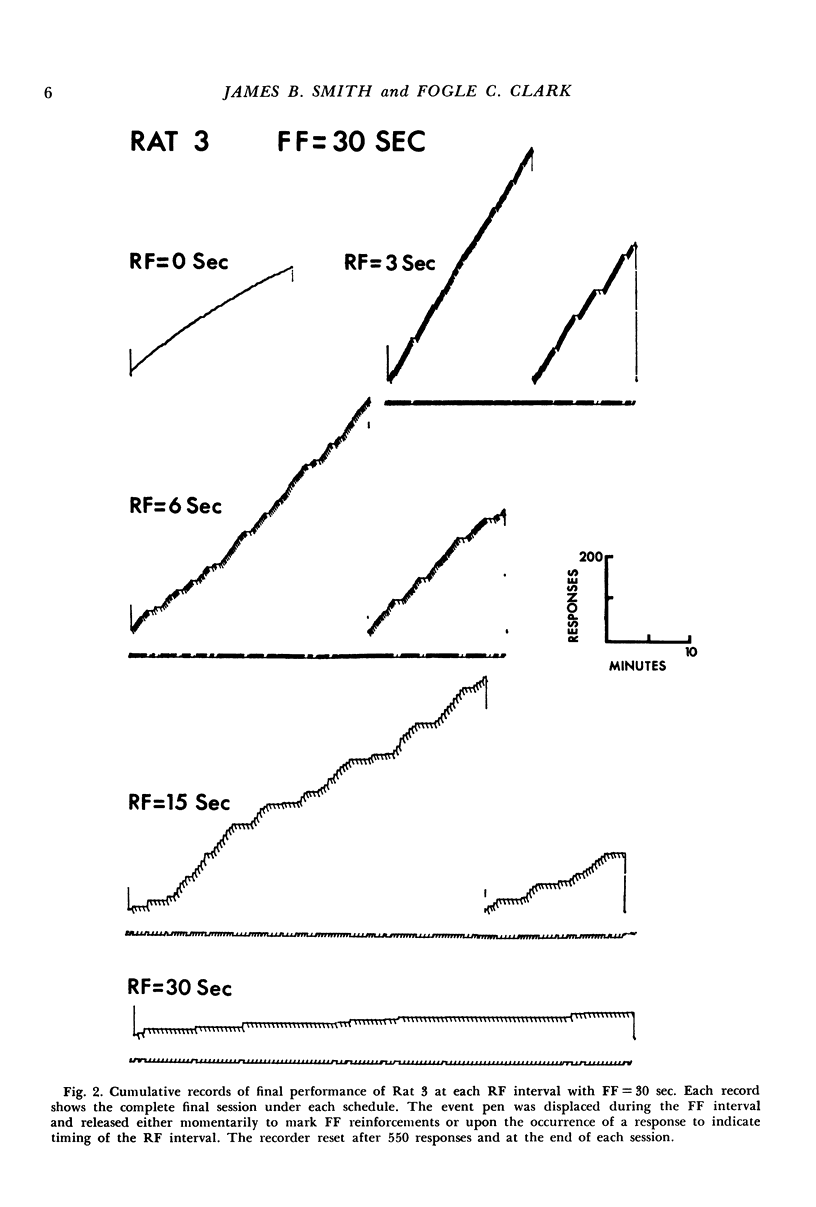
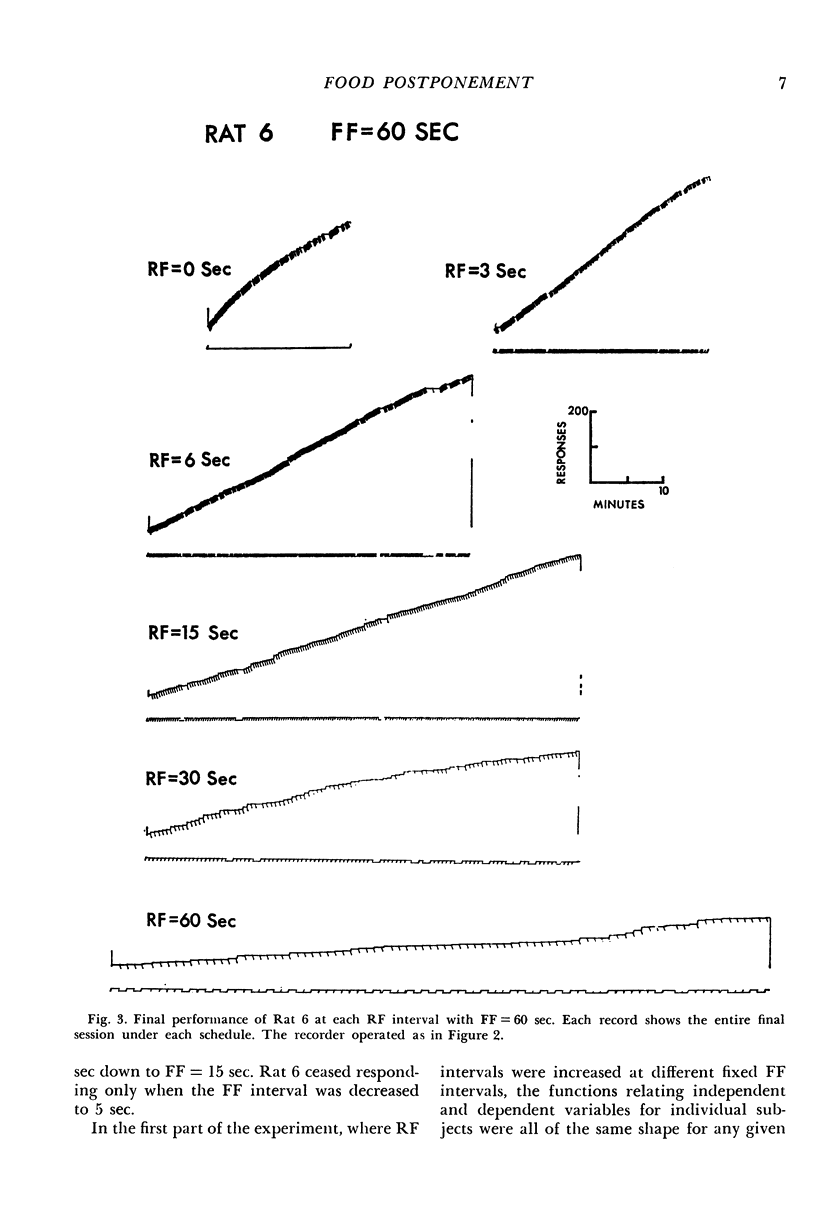
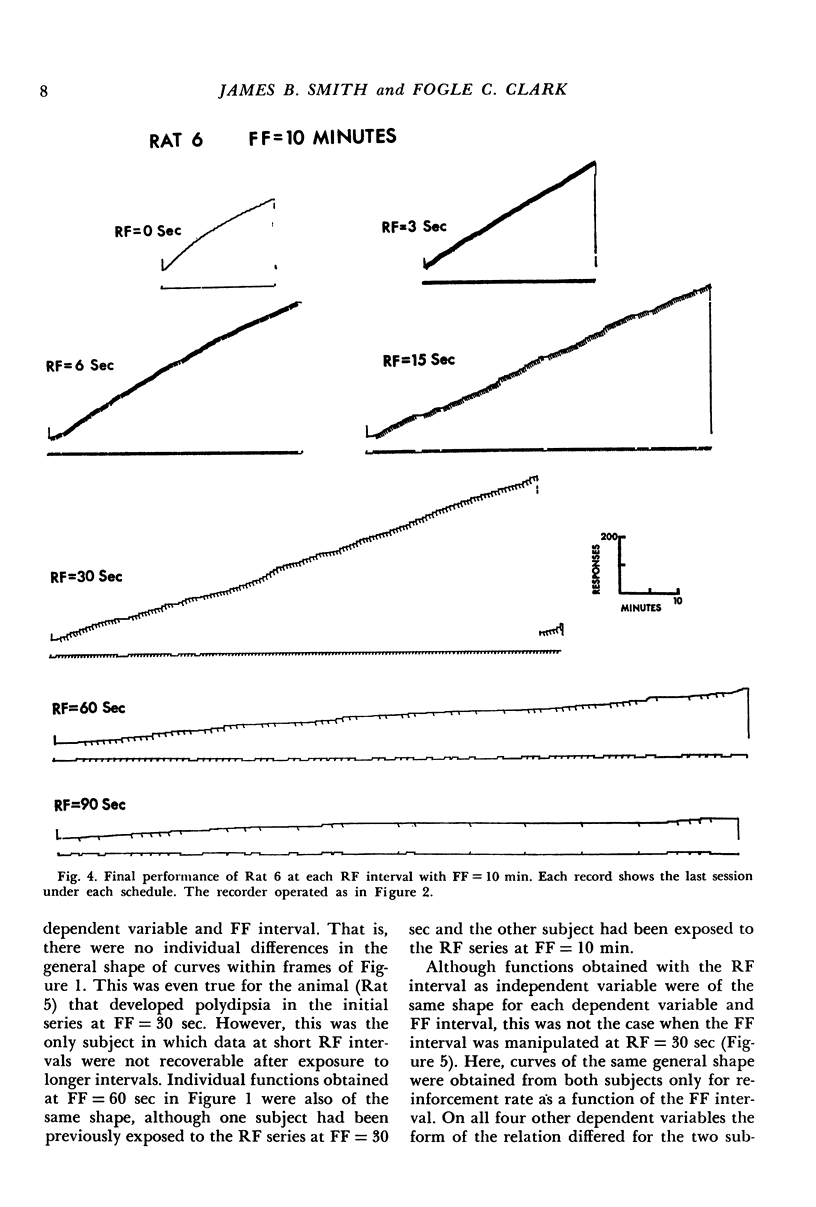
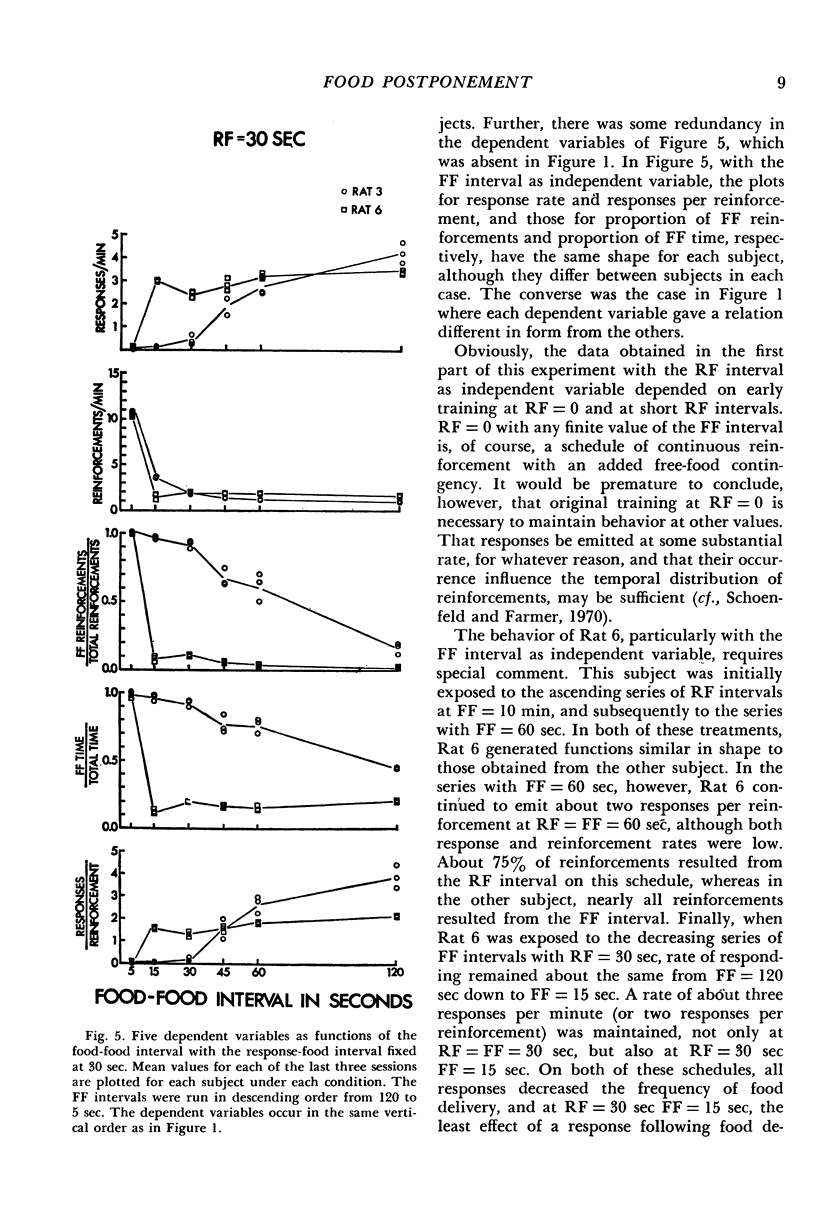
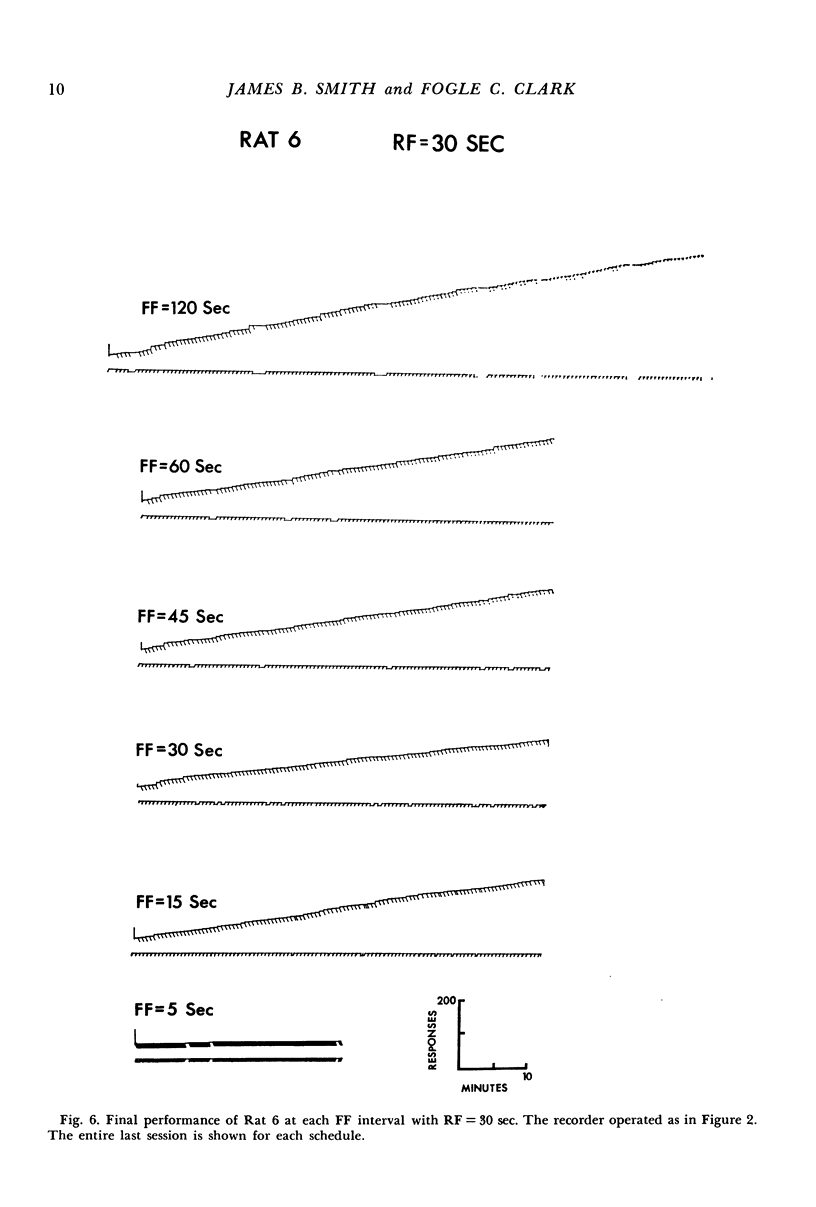
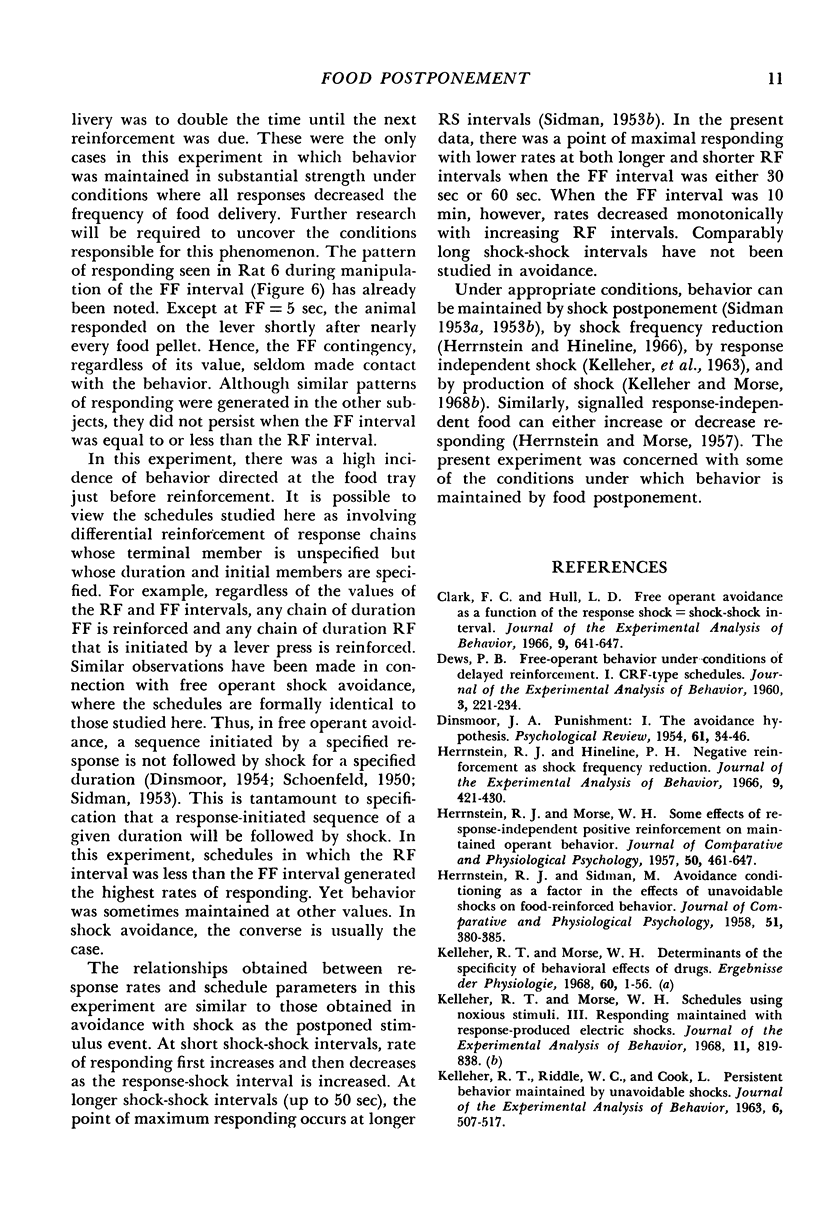
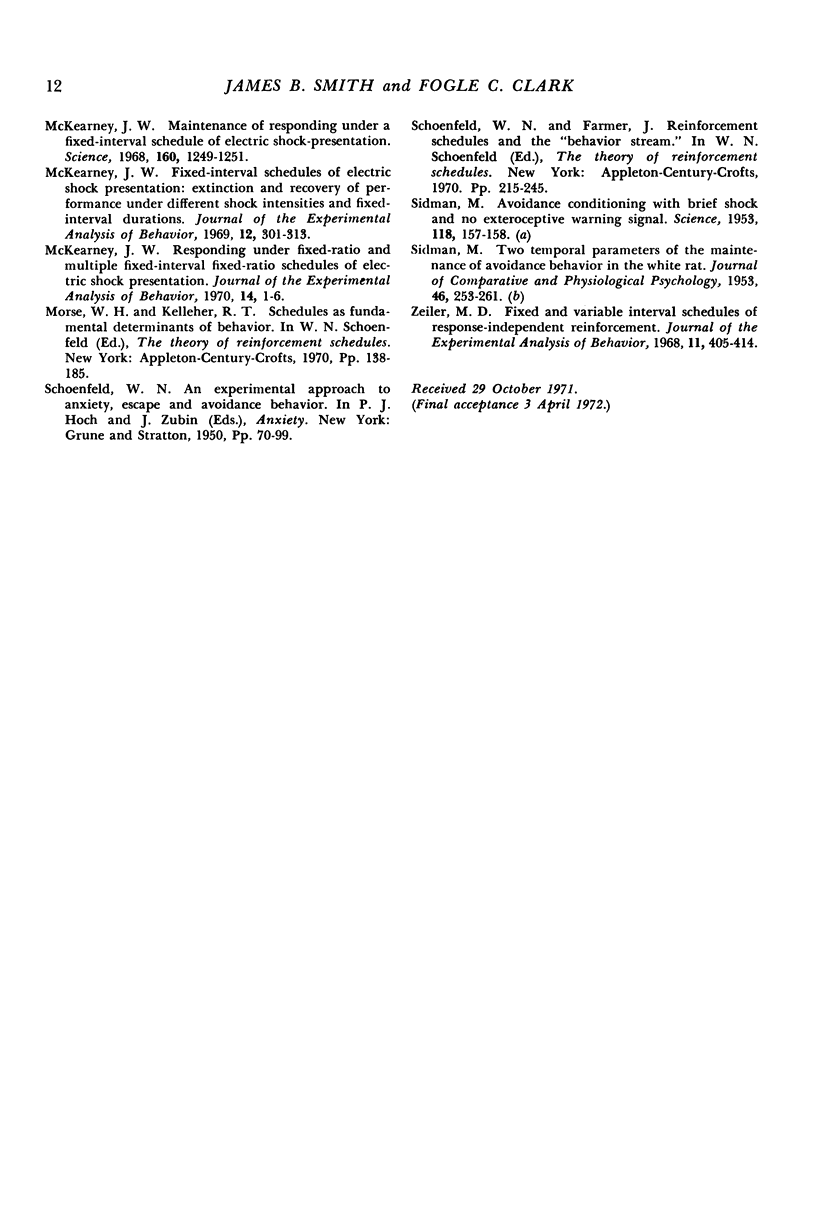
Selected References
These references are in PubMed. This may not be the complete list of references from this article.
- Clark F. C., Hull L. D. Free operant avoidance as a function of the response-shock = shock-shock interval. J Exp Anal Behav. 1966 Nov;9(6):641–647. doi: 10.1901/jeab.1966.9-641. [DOI] [PMC free article] [PubMed] [Google Scholar]
- DEWS P. B. Free-operant behavior under conditions of delayed reinforcement. I. CRF-type schedules. J Exp Anal Behav. 1960 Jul;3:221–234. doi: 10.1901/jeab.1960.3-221. [DOI] [PMC free article] [PubMed] [Google Scholar]
- DINSMOOR J. A. Punishment. I. The avoidance hypothesis. Psychol Rev. 1954 Jan;61(1):34–46. doi: 10.1037/h0062725. [DOI] [PubMed] [Google Scholar]
- HERRNSTEIN R. J., MORSE W. H. Some effects of response-independent positive reinforcement on maintained operant behavior. J Comp Physiol Psychol. 1957 Oct;50(5):461–467. doi: 10.1037/h0041506. [DOI] [PubMed] [Google Scholar]
- HERRNSTEIN R. J., SIDMAN M. Avoidance conditioning as a factor in the effects of unavoidable shocks on food-reinforced behavior. J Comp Physiol Psychol. 1958 Jun;51(3):380–385. doi: 10.1037/h0038487. [DOI] [PubMed] [Google Scholar]
- Herrnstein R. J., Hineline P. N. Negative reinforcement as shock-frequency reduction. J Exp Anal Behav. 1966 Jul;9(4):421–430. doi: 10.1901/jeab.1966.9-421. [DOI] [PMC free article] [PubMed] [Google Scholar]
- KELLEHER R. T., RIDDLE W. C., COOK L. PERSISTENT BEHAVIOR MAINTAINED BY UNAVOIDABLE SHOCKS. J Exp Anal Behav. 1963 Oct;6:507–517. doi: 10.1901/jeab.1963.6-507. [DOI] [PMC free article] [PubMed] [Google Scholar]
- Kelleher R. T., Morse W. H. Determinants of the specificity of behavioral effects of drugs. Ergeb Physiol. 1968;60:1–56. doi: 10.1007/BFb0107250. [DOI] [PubMed] [Google Scholar]
- Kelleher R. T., Morse W. H. Schedules using noxious stimuli. III. Responding maintained with response-produced electric shocks. J Exp Anal Behav. 1968 Nov;11(6):819–838. doi: 10.1901/jeab.1968.11-819. [DOI] [PMC free article] [PubMed] [Google Scholar]
- McKearney J. W. Fixed-interval schedules of electric shock presentation: extinction and recovery of performance under different shock intensities and fixed-interval durations. J Exp Anal Behav. 1969 Mar;12(2):301–313. doi: 10.1901/jeab.1969.12-301. [DOI] [PMC free article] [PubMed] [Google Scholar]
- McKearney J. W. Maintenance of responding under a fixed-interval schedule of electric shock-presentation. Science. 1968 Jun 14;160(3833):1249–1251. doi: 10.1126/science.160.3833.1249. [DOI] [PubMed] [Google Scholar]
- McKearney J. W. Responding under fixed-ratio and multiple fixed-interval fixed-ratio schedules of electric shock presentation. J Exp Anal Behav. 1970 Jul;14(1):1–6. doi: 10.1901/jeab.1970.14-1. [DOI] [PMC free article] [PubMed] [Google Scholar]
- SIDMAN M. Avoidance conditioning with brief shock and no exteroceptive warning signal. Science. 1953 Aug 7;118(3058):157–158. doi: 10.1126/science.118.3058.157. [DOI] [PubMed] [Google Scholar]
- SIDMAN M. Two temporal parameters of the maintenance of avoidance behavior by the white rat. J Comp Physiol Psychol. 1953 Aug;46(4):253–261. doi: 10.1037/h0060730. [DOI] [PubMed] [Google Scholar]
- Zeiler M. D. Fixed and variable schedules of response-independent reinforcement. J Exp Anal Behav. 1968 Jul;11(4):405–414. doi: 10.1901/jeab.1968.11-405. [DOI] [PMC free article] [PubMed] [Google Scholar]


